(PCC) Program on Chinese Cities – Thoughts on Overseas Travels Series
Authors: Chunling Zhang,
PhD, Professor at the School of Management, North China University of Science and Technology, Visiting Scholar at the University of North Carolina; research areas include regional economics, information technology, and management innovation. Email: 103241241@qq.com
Upon my arrival in North Carolina, I was delighted by the blue skies and fresh air. However, after the novelty wore off, a wave of loneliness hit, and I began to miss home. This difficult adjustment period was alleviated thanks to a new friend, Yanzi, who kept me busy. Each morning, I would take the D-Bus to school with lunch packed, attend classes, participate in school activities, or study in the library. We would heat up our lunch at the cafeteria and dine together. After school, we’d walk home via the trail, equipped with sportswear, hiking shoes, and backpacks, embodying the typical student look (Image 1). It was here that I got to know and fall in love with the trail, encountering deer, cardinals, chipmunks, turtles, rabbits, and more. Strangers greeting each other with a smile and a hello on the trail warmed my heart. Walking the trail not only exercised my body but also enriched my spirit with diverse life stories and laughter along the way. Yanzi described to me the trail’s beauty in all four seasons, and I began to look forward to walking it after snowfalls. My wonderful year of visiting started with the trail, and soon, Yanzi too would conclude her visit with fond memories of the trail.
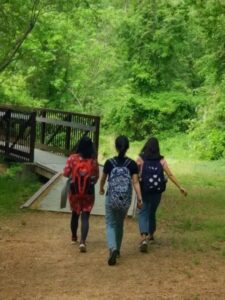
What’s the best translation for “Trail”? Path, track, walking trail… none seem to fully capture its rich essence. For simplicity, I will use the more common term “trail.” Trails are places filled with culture and love. The Battle Branch Trail, which connects the school with our residence, features the Melinda Kellner Brock Terrace—a lookout point built by a mother in memory of her daughter (Image 2). Here lie their beautiful memories, which the mother wishes to share with all who pass by. The Bolin Creek Trail is a favorite spot among our neighborhood’s residents; a modest tombstone along the trail bears a beautiful epitaph for a friend who died at 29, a poignant reminder of life’s brevity (Image 3). Some trails have benches placed at intervals, many donated as enduring symbols of love (Images 4-6).

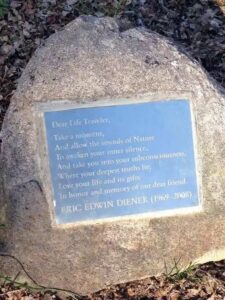
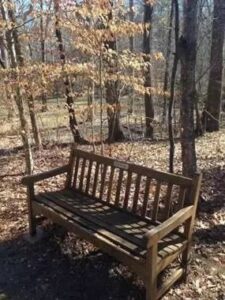
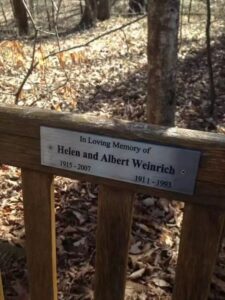
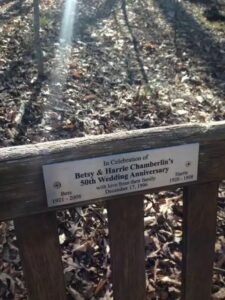
Initially, I only knew of America as a nation reliant on automobiles, where lacking a car meant being immobile. Only after arriving did I discover its extensive trail system (Image 7), with a total length exceeding 96,000 kilometers, surpassing the interstate highway system. How is such a comprehensive trail system planned? Who lays wooden planks over muddy paths after the rain (Image 8)? Who manages and maintains these trails, and how are they funded? In China, we lack such planned trail systems. What’s the current situation? Despite this not being my area of expertise, my fondness for trails has driven me to explore this topic.

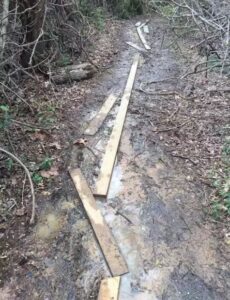
I. Trails as Key Recreational Resources in the U.S.
The development of the American trail system is closely linked to the country’s abundant natural landscapes and the people’s love for nature and outdoor activities. The oldest and longest trail is the Appalachian Trail, completed in 1937 and designated as the first national scenic trail by the National Trails System Act in 1968. Spanning approximately 3505 km from Mount Katahdin in Maine to Springer Mountain in Georgia, it crosses 14 states, 8 national forests, and 6 national parks. The 2015 movie “A Walk in the Woods” is set on this trail.
In the U.S., trails are an integral part of life and a crucial outdoor recreational resource. As the trail system has evolved, so has its cultural significance, not only offering entertainment and exercise but also serving memorial, sightseeing, and educational purposes (Image 9). In 1993, the U.S. designated the first Saturday of June each year as National Trail Day. In contrast, China has relatively fewer per capita natural resources and a different lifestyle, making trails less familiar to the Chinese public and underdeveloped.
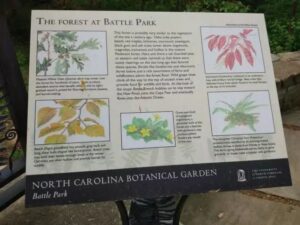
II. Management Structure of Trails
The National Trails System Act, through various amendments, has detailed regulations on types of trails, authorization, and management structures, creating a multi-tiered system of cooperation. U.S. trails include national scenic, historic, recreational, and connecting trails. Scenic and historic trails require congressional approval and have stringent and complex establishment procedures, typically taking 6-15 years. Recreational and connecting trails are authorized by the Department of the Interior or the Department of Agriculture.
The management system involves a public-private partnership. At the strategic level, Congress designates the National Park Service, Bureau of Land Management, or the National Forest Service to oversee macro-management based on the land ownership. At the operational level, state and local agencies or NGOs are responsible for trail development and management, with routine maintenance carried out by volunteers from numerous non-profit trail organizations. These volunteers, often professionals, handle nearly all aspects of trail management including resource surveys (Image 10), database creation, planning, construction, interpretation, conservation, and maintenance.
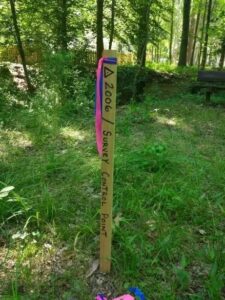
III. Implications
-
Initiate Trail Development to Meet Public Needs
In China, office workers and students generally lack outdoor activities, and the overall health of the population is concerning. As environmental and health awareness rises, people increasingly seek to connect with nature during holidays to relieve stress and exercise. While tourism, especially rural and forest tourism, has blossomed, available resources do not meet demand, leading to overcrowded tourist spots during holidays. Some adventurers venture into undeveloped forest areas, posing risks to both themselves and the environment.
To protect natural environments and provide outdoor recreational opportunities, China can draw on America’s experience to develop a trail system. Trails offer a healthy lifestyle and cultural medium, providing an expressive outlet for those who deface scenic spots with graffiti by encouraging donations and plant sponsorships, enriching their experience while touching their hearts.
-
Focus on Public Good, Expand Investment and Management Channels
Trails are public facilities provided by the government to meet public needs, forming a non-profit public service. While state funding is the primary source, corporations, social organizations, and individuals also have responsibilities and duties to participate in their construction and management. A government-led, market-oriented operation could broaden investment channels, such as through naming rights auctions. Management and maintenance could draw on U.S. experiences, maximizing the strengths of NGOs and volunteer groups.
-
Prioritize Planning, Establish Standards and Technical Specifications
A trail is more than just a path; it includes various facilities. A well-designed trail not only ensures safety but also enhances the visitor experience. Trail construction must follow specific standards and technical guidelines. China should promptly establish national trail standards and planning guidelines to guide nationwide trail development, starting with urban and suburban areas to explore trail construction and management experiences, connecting major natural, historical, and cultural resources through trails, and eventually planning inter-provincial trails to form a network with Chinese characteristics.
-
Integrate Natural, Historical, and Cultural Resources, Enhance Conservation Efforts
The U.S. emphasizes the protection of natural heritage, including comprehensive dynamic conservation of natural ecosystems and genetic diversity. Trails link numerous natural and cultural landmarks, greatly facilitating the integration, protection, and perpetuation of landscape resources. China, with its rich history, has many natural and historical cultural resources that need protection and development. Recent interests in reviving routes like the Ancient Tea Horse Road and the Silk Road could benefit from trail development initiatives.
Guided by the “National Trails System Act,” the U.S. has established the world’s most comprehensive national trail system, supported by websites and mobile apps (ALLTrails) that provide detailed information on trails, navigation, and user reviews. Drawing on American experiences and considering Chinese conditions, China’s trail system should prioritize planning, promote healthy lifestyles, and provide spaces for outdoor fitness and social interaction, rekindling respect and reverence for nature.
